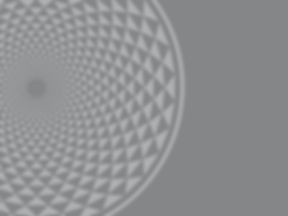
EXISTING Research & Clinical Studies

The Sonosphere is a new invention, and we are currently working toward our goal of getting independent clinical studies. This page includes related clinical studies and bodies of work, tested and peer-reviewed in the scientific community in the past 15 yrs. Below you will find summaries and links to clinical studies on the effects of 40 hz audio wave stimulation, showing it to be effective in reducing pain, and offering long-term health benefits, including reducing symptoms of certain debilitating illnesses.
The Sonosphere's fundamental resonance is between 37-42 hz, and is the strongest and most effective delivery system for full-body 40 hz stimulation to date. We have combined the therapeutic qualities of low frequency Vibroacoustic Therapy (VAT) combined with a self-contained immersive art environment. To be clear, The Sonosphere has not been evaluated by the FDA, and is not intended to diagnose, treat, or cure any disease or illness at this time.
The study sample consisted of 19 individuals aged 18-70 years with a clinical diagnosis of MDD. The participants were assessed before and after a five-week treatment period, which consisted of listening to an instrumental musical track on a vibroacoustic device, delivering auditory and vibrotactile stimulus in the gamma-band range (30-70 Hz, with particular emphasis on 40 Hz). The primary outcome measure was the change in Montgomery-Asberg Depression Rating Scale (MADRS) from baseline to posttreatment and resting-state EEG.
Here, we show that whole-body vibrotactile stimulation at 40 Hz leads to increased neural activity in the primary somatosensory cortex (SSp) and primary motor cortex (MOp). In two different mouse models of neurodegeneration, Tau P301S and CK-p25 mice, daily exposure to 40 Hz vibrotactile stimulation across multiple weeks also led to decreased brain pathology in SSp and MOp. Furthermore, both Tau P301S and CK-p25 mice showed improved motor performance after multiple weeks of daily 40 Hz vibrotactile stimulation. Vibrotactile stimulation at 40 Hz may thus be considered as a promising therapeutic strategy for neurodegenerative diseases with motor deficits.
Possible Mechanisms for the Effects of Sound Vibration on Human Health
This paper presents a review of the effects of sound vibration, specifically low frequency sound (up to 250 Hz) including infrasound (1–16 Hz) on humans and mice in the blood, brain, and bone. Types of application described include whole body vibration, vibroacoustics, and focal applications of vibration. The Sonosphere integrates all of these applications, combined with immersive 360° sound, lighting, and the full-range of body orientations.
The Long Term Effects of Low Frequency Stimulation in Fibromayalsia Patients
This paper presents a review of clinical trials and treatments which involved 23 min of low frequency stimulation at 40 Hz, delivered using transducers in a supine position. The Sonosphere also uses resonate frequencies in the range of 40hz in our cymatic platform.
Treatment of chronic back pain using indirect vibroacoustic therapy: A pilot study
This 12-week pilot study examines the efficacy of applying low frequency sound wave stimulation (between 16-160 Hz) through both hands and feet on relieving pain and improving functional ability in patients with chronic back pain. The preliminary findings showed that passive application of low frequency sound wave stimulation therapy through both hands and feet was effective in alleviating pain and improving functional ability in patients with chronic back pain.
Vibroacoustic treatment to improve functioning and ability to work: a multidisciplinary approach to chronic pain rehabilitation
A review and phase II study of Vibroacoustic Therapy (VAT) which is the foundation of many sound beds, including the marketed and FDA approved Next Wave bed, which uses 40 hz tones in series to address oscillatory dysfunction of neuronal signaling which is suggested to play a significant role in developing and maintaining chronic pain due in part to disruption of the neurological gamma band (around 40 Hz) related to thalamocortical dysregulation. Both clinical evidence and previous studies support the application of 40 Hz to act as a driving force for resolving this disrupted frequency band. The Sonosphere’s patented transducer system is capable of producing single unified tones in series, octaves, complex chords and unique standing waves which can resonate the body’s internal cavities and entrain/coordinate neuronal signaling.
Whole-body vibration training and bone health in postmenopausal women
A systemic review and meta-analysis of the effects of WBV training on bone mineral density (BMD). The combined analysis of existing studies found significant improvements in BMD of the lumbar spine and enhanced femoral neck BMD in postmenopausal women younger than 65 years. The Sonosphere’s platform creates whole-body vibrations which may help increase bone density due to mechanical load exertion against the pull of gravity.
Influence of 40 Hz and 100 Hz Vibration on SH-SY5Y Cells Growth and Differentiation
A novel bioreactor platform of neuronal cell cultures using low-magnitude, low-frequency (LMLF) vibrational stimulation was designed to discover vibration influence and mimic the dynamic environment of the in vivo state. The data demonstrated that exposure to neuronal cells to 40 Hz and 100 Hz vibration enhanced cell differentiation and proliferation. This positive impact of vibration can be used in tissue engineering and regenerative medicine.






